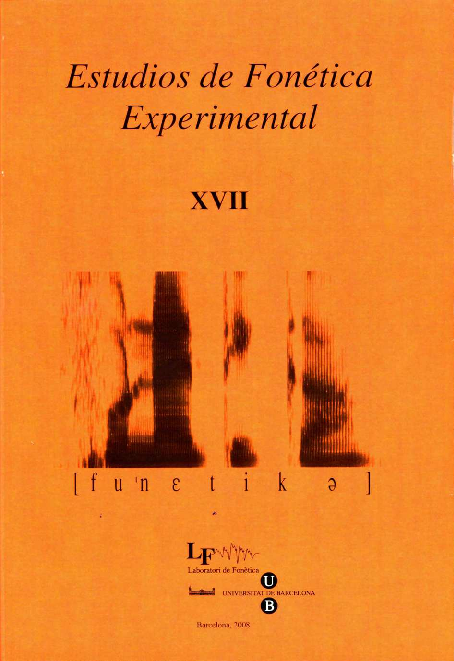BATVOX: sistema automático de reconocimiento de locutor
Keywords:
text independent and language independentAbstract
The aim of this work is to provide a general vision on the automatic speaker recognition system BATVOX, and to describe the blueprint of its functioning. For this purpose, we will give an overview of the main features of the system. We will recall briefly the theoretical bases of the technology used by BATVOX to perform its calculations, and we will mention the basic processes that undergoes an audio file when it is introduced in the system. This implies that we will see how the system carries out the characteristics extraction process, the parameterization and the training of the audio files.
References
GONZÁLEZ-RODRIGUEZ, J.; D. TORRE TOLEDANO y J. ORTEGA-GARCÍA (2008): «Voice biometrics», en A. K. Jain., P. Flynn y A. A. Ross (eds): Handbook of Biometrics, capítulo 8. pp. 151-170.
GONZALEZ-RODRIGUEZ, J.; A. DRYGAJLO; D. RAMOS-CASTRO; M. GARCIA-GOMAR y J. ORTEGA-GARCIA (2006): «Robust Estimation, interpretation and assessment of likelihood ratios in forensic speaker recognition», Computer Speech and Language, vol. 20, pp. 331-335.
Downloads
Published
How to Cite
Issue
Section
License

This work is licensed under a Creative Commons Attribution-NonCommercial-NoDerivatives 4.0 International License.
All articles published online by Estudios de Fonética Experimental are licensed under Creative Commons Attribution-NonCommercial-NoDerivs 4.0 International (CC BY-NC-ND 4.0 DEED), unless otherwise noted. Estudios de Fonética Experimental is an open access journal. Estudios de Fonética Experimental is hosted by RCUB (Revistes Científiques de la Universitat de Barcelona), powered by Open Journal Systems (OJS) software. The copyright is not transferred to the journal: authors hold the copyright and publishing rights without restrictions. The author is free to use and distribute pre and post-prints versions of his/her article. However, preprint versions are regarded as a work-in-progress version used as internal communication with the authors, and we prefer to share postprint versions.




